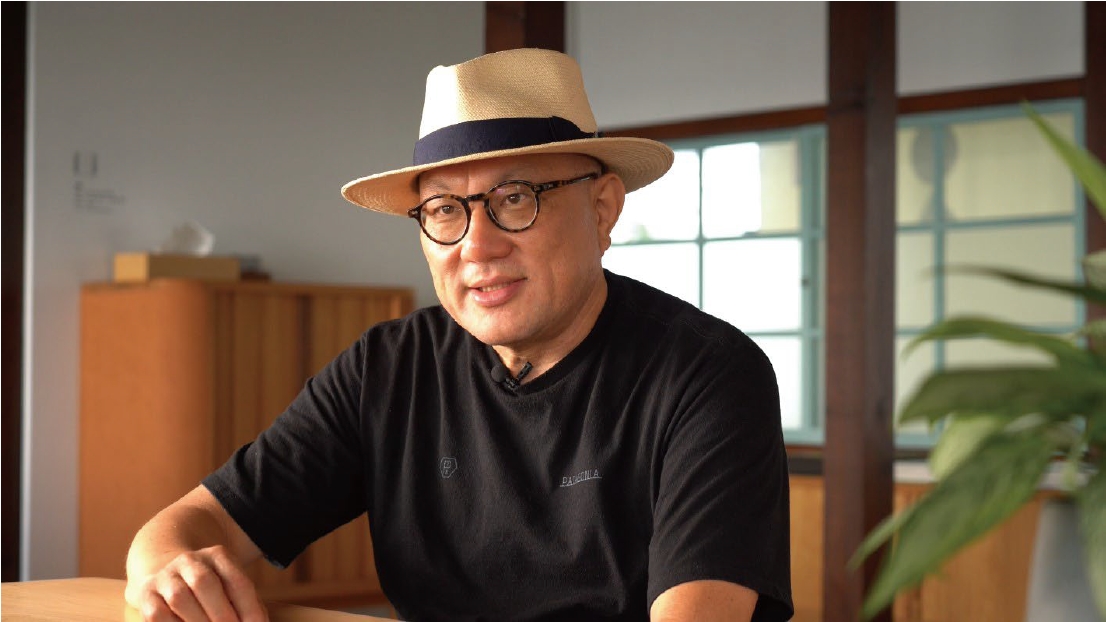Complexity and Contradiction in Wood Art Competition
Chih-Feng, Lin / Founder, Museum Industry Research Office
"Complexity and Contradiction in Wood Art Competition"
A design competition could be a simple affair. But we cannot look at an international wood furniture competition, organized by a museum, without considering the context and complexity. With the competition taking place in Daxi, we are looking at contemporary work from a traditional perspective. This contradiction is part of the competition’s discourse that is quite fascinating.
When the Curtain is Raised
The first competition can be likened to a curtain slowly raising to unveil both the spectacle and possible problems. The air is tense with expectations and what could never have been anticipated. The Daxi Wood Art Ecomuseum, as the organizer, cannot afford to ignore these factors at play. Whether internationally or in Taiwan, museum organizations have always focused on what a museum is. Therefore, a woodcraft competition held in Daxi is not about judging the submissions against the agreed-upon criteria; we must also consider whether the event as a whole has successfully acknowledged the museum’s role in encouraging public and social participation.
On the day of the final judging, participating experts went the distance to identify winning features of each submission. Given that this is such a new event, we must respect the opinions of these veterans, and the results were supported by a strong consensus among the whole judging panel. As an educator and designer, my role as the judge was more of a bystander, offering a non-professional perspective to round out the critique. I also regarded the event from a museum studies perspective, and this afforded me a great chance for reflection.
Introducing Daxi to the World
From a broader perspective, the International Wood Art Competition was held in compliance with the principles that guide a museum’s work. The first is “international marketing,” which seeks to spotlight Taoyuan City’s Daxi Wood Art Ecomuseum internationally. The positioning is clear: woodcraft being the theme, eco-friendliness being the method, taking place in Daxi, Taiwan. Next on the list is “collection and exhibition.” Of course, a competition has a different and more proactive approach than an exhibition held in the museum. Soliciting submissions is tantamount to the collection process, as contemporary wood art creations are curated as artistic possibilities. As soon as the pieces meeting the collection criteria are brought together at a specific time, critiqued, judged, and awarded. A rigorous curation process takes place when the judges work together to rank the submissions and present the results to the public.
Looking to A New Mindset
For future competitions, I believe it’s possible to offer them as experiment opportunities to the entrants. It should not be forgotten that the competition is also an exhibition. Having a curator would be a good idea. The organizers can reference the Venice Biennale of Architecture, a great digest of effective cultural export, which is exemplified by a noted leader setting a theme for each competition, to address industrial development trends. Every Golden Lion winner at the Biennale is a model for the industry, celebrated around the world, and the event grows in prestige with every competition. Thematic curation methods have been found to inspire discussions, which encourage new woodcraft possibilities. I’d like to cite a trending topic that’s inciting much discourse: “biomimicry” is an innovative concept embraced in the science community, the core of which is the emulation of the models, systems, and elements of nature for the purpose of solving complex human problems, and finding the solution to return to our roots. On the other hand, “synthesis” explores the combination of different ideas, materials, processes, or even functions. This kind of organic fusion and usage borrowing could inspire the wildest of ideas. Wood crafting as a process that addresses the reconciliation with nature or social harmony could bring the art to a new level.
Industry and Local Revitalization
This topic inevitably incites mixed responses and contradictions. Will local wood craftsmen find inspirations in the competition process? Or will it drive them farther away? This question, though serious, does not need immediate resolution; yet we must always stay alert of its presence. First, the giving of awards is of course a way to revitalize the industry. But are the prize money and the award mechanism sufficient to bring the reach of the competition to full play? This is an important factor in assessing the competition. More importantly, how much media and public interest can be generated from the announcement of the theme to the release of the winners’ list? Should we engage the locals? The competitions to be held in the future should be extended far beyond Taoyuan to engage users, makers, and designers as well. London’s Design Museum hosts a permanent exhibition on the interconnection between these three roles as well. This could really drive the discussion around the competition.
The Paradoxes of Design
When you have pieces from so many great craftsmen in front of you, any kind of judging you make is bound to be filled with contradictions and paradoxes. The same idea has been espoused by the US design scholars Harold G. Nelson and Erik Stolterman in their book, The Design Way (second edition published by MIT Press in 2014). The most notable point made in the book was the idea of “paradoxes” in design, of which the authors identified twelve that I will give now:
1. Design requires non-obsession and full participation;
2. Design is pliable yet durable;
3. Design is knowledgeable yet naive;
4. Design is experienced yet new;
5. Design is collaborative yet lonely;
6. Design has process and structure;
7. Design has a cycle and a plotline;
8. Design requires control but it is also uncontrollable;
9. Design is unique yet universal;
10. Design can be infinite yet constrained;
11. Design is eternal and temporary;
12. Design is glorious and evil.
Though a very critical view on design, it allows us to recognize the complexity in design beyond products in practical use, which is a needed perspective in a competition. Before Nelson and Stolterman released the book, the October 1999 issue of the design magazine Domus also published a profound feature, “Is First Place the Best Design?” The story looked back on how several past competition winners held up, as well as the strengths of the non-winners. Of course, the process of the competition itself holds meaning. A judging panel might not have the final word on the best submission, but the process must always be sincere in its goal to find the best! Here, I would like to examine two design perspectives to explain that good and bad are never set in stone. The true judge of the competition is time.
Precision in Museology
The international community has a rather precise definition of what makes a museum, yet no agreed-upon archetype for a museum has been iterated. The Daxi Wood Art Ecomuseum has been open for eight years now, but my understanding is that it is still searching for a way to best position itself. The Ecomuseum steadily expands its operation year after year, modifies its planning, slowly changing the people and landscape of the town it is in. This makes me think of the Eden Project in Cornwall, England. It is a botanical garden that also serves as a museum. From the beginning, it was planned and constructed to accommodate constant renovation, which is why it was called a “project.” It is always changing to reflect new needs and the issues of the time, so every repeat visit brings new sights and changed exhibits.
Because Eden Project is constantly changing, new additions do not have to be permanent, and they are designed with environmental friendliness in mind. This method requires a large staff, but it somehow brings a tai-chi style interplay that consists of yin and yang, positive and negative, adding and subtracting, still and moving, local and foreign. If we regard Eden Project as a botanical garden that serves as a museum, the Daxi Wood Art Ecomuseum, then, could be understood as a community building program that serves as a museum. What exactly is a museum? This question is trivial. It just needs to reflect the needs of the community. Perhaps it could expand with planning, but of course plans could always be modified or withdrawn. So this annual wood art competition should have an evaluation mechanism and changes made as appropriate. The competition, like the museum policy, should be an organic entity. Only then can we approach more precision in museum studies.

▶ This article is included in "The First Daxi International Wood Furniture Craft and Design Competition Exhibition Journal". We warmly invite you to purchase for further reading.
▶ Copyright and Licensing Statement:
All content published on this website—including but not limited to text descriptions, images, software, audio recordings, videos, and other information—is protected under copyright law. Without prior authorization, no part or whole of the website's content may be reproduced, publicly broadcast, publicly screened, publicly performed, publicly transmitted, or adapted in any manner governed by current copyright legislation. However, actions that constitute fair use under applicable copyright law are not subject to these restrictions.

